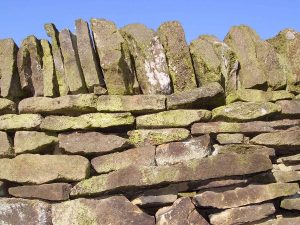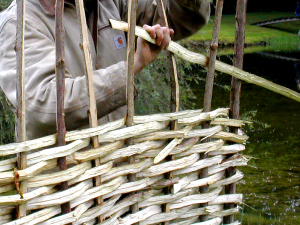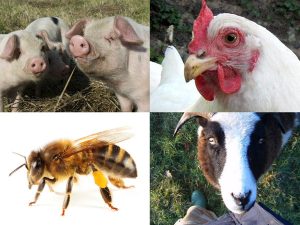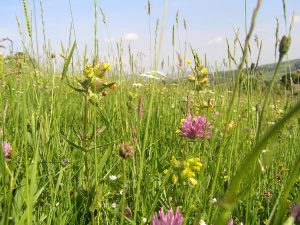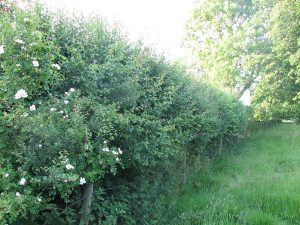Gates & stiles - introduction
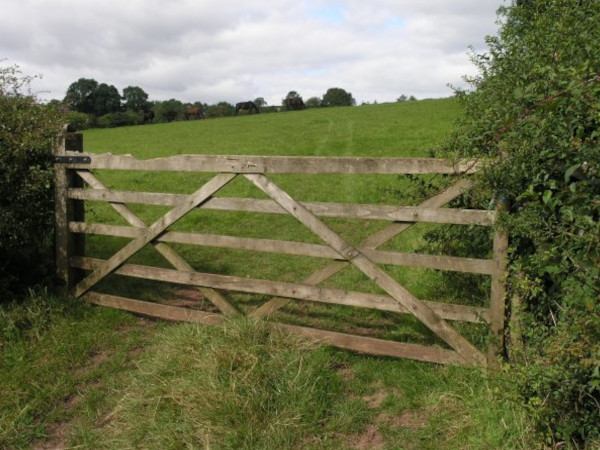
“If you’re a smallholder interested in supporting your local economy and woodland, you might be able to get gates made from local hardwood from your local forestry outlet or sawmill – often for the same price as mass-produced gates.” – Dafydd Davies-Hughes
Contents
What are gates & stiles?
Gates are thresholds, and a way of letting humans, animals and vehicles in and out of an area surrounded by a fence, hedge or wall.
Stiles are human (and dog) specific – they provide a way to get through or over a fence, hedge or wall without a gate, but without allowing the livestock in the field to also get through. They’re usually for public right of way. Cattle grids serve the same function, but are wider to allow vehicles to pass as well as pedestrians.

There are different kinds of farm gates – including the classic 5-bar (main image, above). They can be made of aluminium, steel or wood; larger ones are for livestock or vehicles, smaller ones for pedestrians. Bridle gates are wide enough for a horse and rider, with a vertical lever for the rider to open the gate without dismounting.
There are various kinds of stiles too, the most common being simple wooden steps over fences; but there are also ladder stiles; squeeze stiles – two vertical posts or stones that people can (usually) squeeze between, but livestock can’t; and step stiles for dry stone walls – the steps are often stones that go right through the wall, providing steps up and down, on either side of the wall. An unusual stile is the clapper stile, that can be pushed down for access, after which weights on the end of the bars bring them up to horizontal again when you let go (but be careful not to accidentally let go when you’re halfway over!). Stiles are often replaced by kissing gates nowadays.

What are the benefits of gates & stiles?
As the quote at the top says, gates can be both sustainable and supportive of the local economy. You can buy sturdy wooden or metal gates from farm supply companies. But if you’re a smallholder interested in supporting your local economy and woodland, you might be able to get gates made from local hardwood (rather than from treated softwood from Scandinavia, that you might get from big farm suppliers), from your local forestry outlet / sawmill. Rather than just supplying timber and firewood, they often add value by making gates – often for the same price as mass-produced gates. They’ll probably be able to make bespoke gates to your specifications.
But it can also be very satisfying to make your own (see below), especially using timber from your own land. Plus you’ll know how to replace parts that might get damaged by animals or tractors. Hand-made gates add beauty to the countryside. Walkers will remember your home-made gate – especially if you use crooked or unusual pieces of timber. Possibly the most beautiful gates out there can be found in the Balearic Islands, hand-made from local olive wood, often including twisted branches.
Stiles can help walkers get across your land without damaging fences or stone walls. It’s very important to get them right – not just for keeping animals in but also for allowing public right of way.

The position of a gate can be very beneficial when trying to move animals. The best location for a field gate is probably in the corner of a field, so that if you’re trying to herd livestock through it, you can corrall the animals much easier than if the gate was in the middle of a fence run, hedge etc.
What can I do?
Whether you buy in gates, or make your own, you can make fence posts and gates last twice as long with a couple of additions. The tops of the posts / gates are open to the sun and rain. They can crack and allow water in – so you can put a cap of scrap lead on the top, which will keep the sun and rain out, and poison any fungus or lichens.

For posts that go into the ground, it’s good to use oak. If you buy it, it will be twice the price – but it will last more than twice as long. Posts are most vulnerable a few cm above the ground, and again, a little ring of scrap lead will kill fungus etc. that might eat away at the wood.
Making gates
The simplest way to make gates is with cleft oak or chestnut – i.e. not using a saw, but splitting logs lengthways, into 1/8, 1/16, or even 1/32, depending on the diameter of the log. Oak and chestnut are the most durable, but you can make gates from any wood. Dafydd of Felin Uchaf has made ash gates that he’s replaced after 5 years, but also oak gates that are still going strong after 30 years.

They’re easy (and a joy) to make if you’re at all practical, and you have some basic tools. You can use any timber you have on your property, with screws, nails and/or half-lapped joints. You can cut all the timber and make a gate in a day.
You could also get a local blacksmith to make your hinges – although they’re not as easy to find as they used to be. So you might buy hinges, bolts, catches and other ironmongery from your local farm supplier. Talk to them about what you’ll need, and what goes where.

Hanging gates
It might take from 2 hours to half a day to hang a gate well, so that it swings nicely and balances well. This includes digging holes for gate posts or drilling holes in stone gate posts.
Gates will last longer if they’re not under trees. The sap in the tree leaves is sugary, and feeds lichen and moss that will eat away at your gate.
You don’t want to hang a gate from a straining post that’s holding strained fence wire. A gate post is separate from the fence. A telegraph pole is good, or a large, tanalised softwood post, round or square, with a pointed top so that the rainwater runs off (or with a lead cap – see above). A small, pedestrian gate can hang off a small, 13cm diameter post, but not a vehicle gate – a 12-15 foot (3.5-4.5m) wide gate will need a large gate post (15-18cm diameter or square) or telegraph pole.
Hang the gate with two hinges, fixed to the gate post. The top hinge goes all the way through the post – drill a hole right through for it. The top hinge has a thread at the far end – a bolt goes on it to tighten it firmly. The bottom hinge has a stake. Drill half way into the post, then hammer the stake in (there are other types of hinges too, including brackets that fit to the posts etc. – but you’ll get the idea).
A galvanised gate has a lot of adjustability – around 5-6cm of adjustment at the top and bottom. The gate has two eye bolts – one at the top and one at the bottom. They sit on the hinges, that have a vertical point that goes through the eye of the bolt. Gravity holds the gate in place. There are two nuts on each bolt, so that you can adjust the hinges so that the gate swings open properly.

If you think there’s a chance that your gate might be lifted off and stolen, you can install the bottom hinge so that the rod for the eye bolt points down instead of up. That means that the gate can’t be lifted off, which makes it much more difficult to steal.
On the other gate post, you fit a standard gate catch (from agricultural suppliers) with screw bolts (hit them with a hammer to give them a grip, then turn them all the way in with a spanner). It’s easy to attach, and a pin on the gate fits into the catch to close it.

Fences delineate the borders of your land. However, make sure that you don’t fence across open-access land or public rights of way – or if you do, you’ll have to install a stile so that people (but not animals) can climb over the fence.
Specialist(s)
Thanks to Dafydd Davies-Hughes of Felin Uchaf and Nagakusala Dharmacharin of Treesponsibility for information. Main image: Hywel Williams, CC BY-SA 2.0
The specialist(s) below will respond to queries on this topic. Please comment in the box at the bottom of the page.

Sam Ansell is part of the Coppice Co-op – a workers co-operative based in the North West. ‘We specialise in coppice woodland management, sustainable products, craft courses and training. We also love making and installing greenwood gates’.


